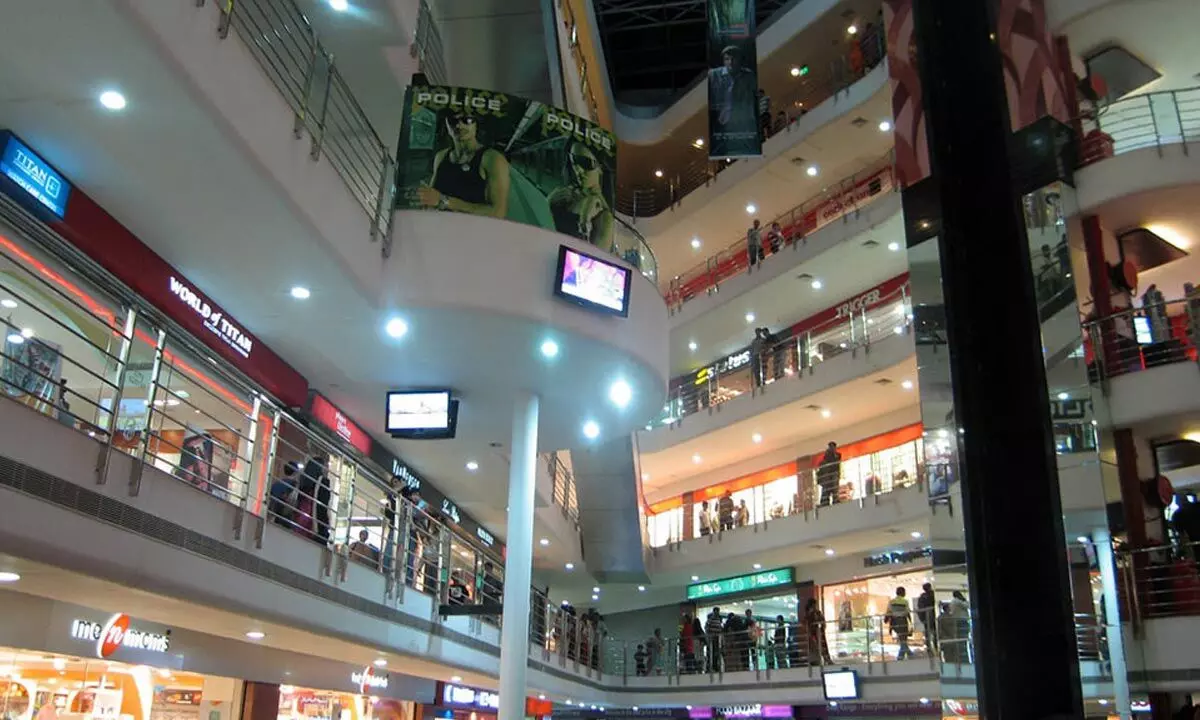Hyd has highest Grade A mall stock in India
Constitutes a maximum share of 52% total gross leasable Grade A mall stock in the country: Knight Frank India report
image for illustrative purpose

During FY 2017-2022, sales volume in the organised retail sector grew at a CAGR of 24% reaching $52 bn across top 8 cities in India. In the long term, the potential consumption in the malls is forecasted to grow at a CAGR of 29% in between FY 2022-28 and is estimated to be at $39 bn in FY 2028
Hyderabad: Hyderabad recorded the highest concentration of Grade A mall stock across top eight cities in India, as per international property consultant Knight Frank India's latest report 'Think India, Think Retail 2022 – Reinventing Indian Shopping Malls'.
According to the report, the city has 7.2 million sft of gross leasable area (GLA) as of H1 2022 comprising a share of 7.7 per cent of the country's total mall stock. Out of the total stock in the city, a maximum share of 52 per cent comprised of the Grade A mall stock at 3.9 million sft. The share of Grade B and C malls stood at 21 per cent (1.57 million sft) and 27 per cent (2.02 million sft) respectively.
The GLA across 271 operational malls in top eight cities of the country stood at 92.9 million sft as of H1 2022. A significant growth from 77.4 million sft of GLA registered until December 2019 across 255 malls. Grade A malls contributed 39 per cent of the total stock with 36 million sft. High occupancy, strong tenant mix, good positioning and active mall management being the key driving factors.
During the same period, Grade B malls, with decent occupancy and tenant mix, contributed 31 per cent with 29.1 million sft, while Grade C malls contributed the lowest 30 per cent (nearly 27.8 million sft). High vacancy rates, poor tenant mix, and relatively poor mall management impacted the contribution by Grade C malls.
Of the total number of 271 operational malls in India, Grade A comprised of 52 malls accounting to 19 per cent. Grade B and C comprised of 35 per cent (94 malls) and 46 per cent (125 malls) respectively.
Shishir Baijal, CMD at Knight Frank India said, "The retail real estate sector has reached a new level of maturity where smaller sized and lower grade developments are giving way to Grade A malls. The existing Grade A malls have over 95 per cent occupancy which is indicative of the demand for quality real estate in this segment."
Given that retail malls are experiential, more of the future developments will want to create destinations. Therefore, scale and quality of development would require developers to specialise in shopping centre development and operations. Like the office segment, post consolidation, retail real estate too will offer great opportunity for investments including REITs in the future," he added.
As per the report, between FY 2017-2022, sales volume in the organised retail sector grew at a CAGR of 24 per cent reaching $52 billion across top eight cities in India. In the long term, the potential consumption in the malls is forecasted to grow at a CAGR of 29 per cent in between FY 2022-28 and is estimated to be at $39 billion in FY 2028.

